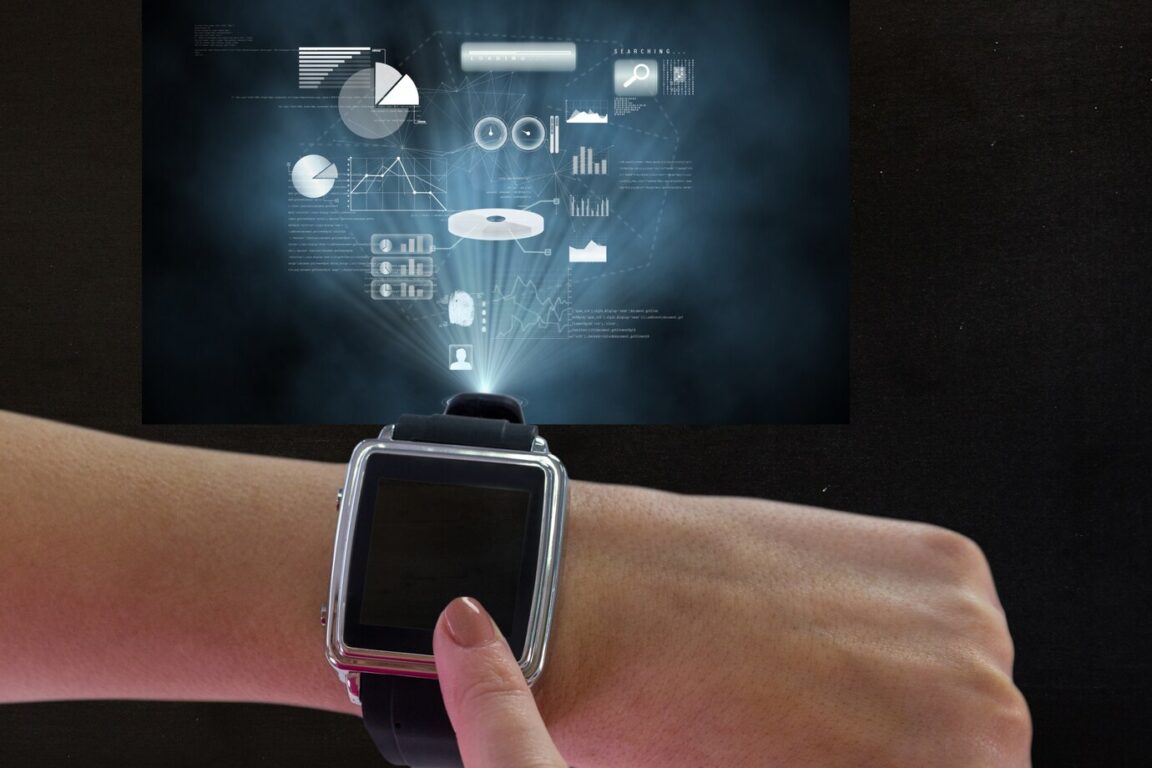Wearable technology has come a long way from being a niche gadget to becoming an essential part of daily life. Whether it’s smartwatches tracking health metrics, fitness bands monitoring workouts, or AR glasses enhancing productivity, wearables are making everyday tasks more convenient. However, what truly powers these devices is the software behind them. Well-designed applications ensure that users receive real-time insights, seamless connectivity, and an engaging experience.
With more industries integrating wearables into their operations, businesses are looking for innovative ways to build applications that enhance user experience. The success of any wearable device largely depends on its app ecosystem, making wearable app development an area of significant growth and opportunity.
The Growing Role of Wearables in Modern Lifestyles
The popularity of wearables is no longer limited to tech enthusiasts. People across all age groups are adopting smart devices for various purposes, from tracking their fitness progress to staying connected while on the go. The convenience these devices offer is reshaping user habits, making technology more accessible and useful.
1. Health and Fitness Tracking Made Effortless
Smart wearables have revolutionized health and fitness monitoring. Gone are the days when people had to rely solely on traditional medical checkups to track their health conditions. Wearable devices now provide real-time updates on heart rate, oxygen levels, sleep cycles, and even stress levels.
Fitness apps connected to smartwatches and activity bands allow users to set fitness goals, monitor calorie intake, and analyze workout effectiveness. Whether it’s a professional athlete or someone trying to maintain a healthy lifestyle, these applications ensure personalized and data-driven guidance.
2. Seamless Communication Anytime, Anywhere
Modern wearables are transforming communication by allowing users to send messages, make calls, and receive notifications without the need to constantly check their smartphones. Smartwatches, in particular, provide quick and easy access to essential information, enabling professionals to stay connected without distractions.
Voice recognition technology, AI-powered virtual assistants, and gesture-based interactions are making communication even smoother. These features are especially useful in industries such as healthcare, logistics, and customer service, where quick access to information is crucial.
3. Wearables in Workplace Productivity
Businesses are increasingly leveraging wearables to improve workplace efficiency. Smart glasses, for example, are being used in manufacturing and logistics to provide hands-free access to real-time data. Employees can receive step-by-step instructions, scan inventory, or even collaborate remotely through AR-based applications.
Wearables are also helping companies monitor employee wellness. Stress-tracking and posture-correcting wearables provide feedback to help reduce workplace fatigue and improve overall well-being.
4. Smart Wearables in Payments and Security
Contactless payment technology has become a significant part of daily transactions. Wearables with built-in NFC (Near Field Communication) technology enable users to make secure payments without carrying cash or credit cards. From smart rings to fitness bands with payment integration, wearables are making transactions quicker and more secure.
Similarly, biometric authentication features such as fingerprint scanning and facial recognition are enhancing security across multiple applications, from unlocking devices to verifying identities for online banking.
Challenges in Wearable App Development
Although the wearable industry is booming, developing applications for these devices comes with its own set of challenges. Businesses need to consider several factors when creating wearable apps to ensure functionality, efficiency, and user satisfaction.
1. Limited Screen Size and UI Constraints
Wearable devices have much smaller screens compared to smartphones, which means developers must focus on creating highly intuitive and minimalistic interfaces. Information must be presented in a way that is easy to digest, ensuring users can interact with the app effortlessly.
2. Battery Optimization
Battery life is one of the biggest concerns for wearable device users. Developers must ensure that apps are optimized to minimize power consumption while still delivering essential features. This includes efficient background processes, optimized animations, and smart power management techniques.
3. Device Compatibility and Synchronization
Wearables rely on seamless integration with other devices, including smartphones, tablets, and even IoT systems. Ensuring smooth synchronization across different platforms and operating systems is crucial for a positive user experience.
4. Data Privacy and Security Risks
With wearables collecting vast amounts of personal data, including health metrics, location information, and financial details, strong security measures must be in place. Developers must implement encryption protocols, multi-factor authentication, and secure cloud storage to protect user data from potential breaches.
The Future of Wearable App Development
The future of wearable technology is shaping up to be more innovative than ever. As advancements in AI, IoT, and sensor technology continue, the next generation of wearables will become even smarter, offering more personalized and intuitive experiences.
1. AI-Driven Personalization
Artificial intelligence is playing a crucial role in wearable app development. AI-powered apps can analyze user data to provide tailored recommendations, whether it’s for fitness, productivity, or mental well-being. From suggesting personalized workouts to predicting health risks, AI integration is making wearable apps smarter.
2. Wearables in Healthcare Expansion
Wearables are already making a difference in the healthcare industry, but their role is set to expand further. Remote patient monitoring, AI-based diagnostics, and real-time health tracking will improve healthcare accessibility. Patients with chronic conditions can benefit from continuous monitoring and instant alerts for potential health risks.
3. Augmented Reality (AR) and Virtual Reality (VR) Applications
AR and VR wearables are gaining traction across various industries. From immersive gaming experiences to workplace training simulations, AR and VR headsets are enhancing user engagement and interaction. Businesses are using AR-powered smart glasses for real-time collaboration and hands-free operations.
4. Smart Clothing and Advanced Sensors
The wearable industry is moving beyond traditional devices, with smart clothing and body-integrated sensors becoming more mainstream. These innovations can monitor posture, hydration levels, muscle activity, and even detect early signs of illness. Athletes, medical professionals, and fashion tech companies are all exploring new applications for this technology.
How Businesses Can Leverage Wearable Technology
For businesses looking to enter the wearable technology market, investing in app development is crucial. Creating applications that cater to user needs while maintaining efficiency and security will be key to success.
- Focus on User Experience – The best wearable apps are those that simplify user interaction and provide real value. Minimalistic design and clear navigation should be a priority.
- Ensure Compatibility Across Devices – Making apps accessible on different wearable platforms ensures a wider reach and better user adoption.
- Prioritize Security Measures – Strong data encryption, secure authentication, and compliance with privacy regulations will help build trust with users.
- Optimize for Performance – Efficient coding and optimized background processing can help improve battery life without compromising on functionality.
Conclusion
The wearable industry is rapidly evolving, offering immense opportunities for businesses and developers alike. With applications driving the core functionality of smart devices, the focus should be on creating apps that are intuitive, secure, and capable of enhancing daily life.
As wearables become more sophisticated, their role in healthcare, communication, fitness, and security will continue to grow. Businesses investing in wearable app development today are setting the stage for the future of digital interaction. The key lies in innovation, adaptability, and user-centered design.






